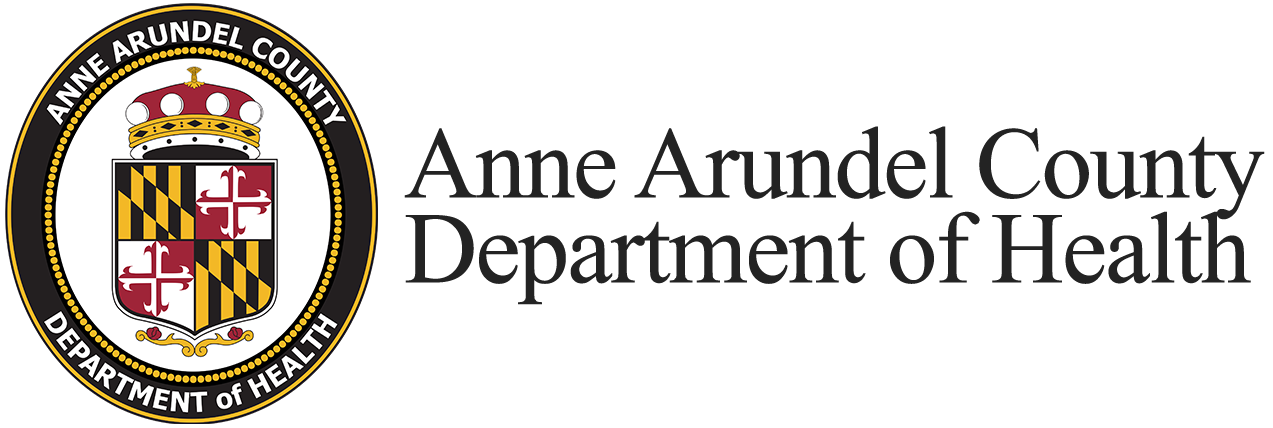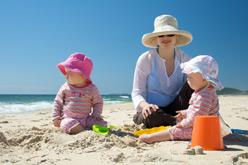Did you know...
- Exposure to the sun during childhood and adolescence plays a role in developing skin cancer in the future?
- More children ages 1-4 die from drowning than any other cause of death. Drowning is the second leading cause of unintentional injury death for children ages 5-14.
Sun Safety
Protection from the sun can save your life.
- Limit time in the sun, especially between the hours of 10 a.m. and 4 p.m. when the sun’s UV rays are the strongest.
- If you are outside, stay in the shade. Water and sand reflect sunlight, making the sun’s UV rays more intense.
- Liberally apply a broad-spectrum sunscreen with an SPF of 30 or higher 15-30 minutes before sun exposure. Broad-spectrum sunscreen protects against both UVA and UVB rays. Reapply sunscreen, even if it is labelled as water resistant, at least every 2 hours. Water resistant sunscreens should also be reapplied after swimming or sweating according to directions on the label.
- Children 6 months and older should wear sunscreen. Ask your doctor about using sunscreen on an infant under 6 months.
- Wear sunglasses that block 100% of UVA and UVB rays.
- Use lip balm with an SPF of 30 or higher.
- Cover up when outside by wearing a wide-brimmed hat, long-sleeved shirt and full-length pants.
- Do not use tanning beds, because they are just as dangerous as the sun’s UV rays.
- Check your skin regularly for signs of skin cancer, including any changes in birthmarks, moles and spots. If you see any kind of change or other warning signs, contact your health care provider.
For more information on sun safety:
Water Safety
Every day, about 11 people die in the United States from drowning.
At Home:
- Never leave your child alone in or around water, including bathtubs, sinks and toilets.
- Do not rely on bath support rings or seats to keep your child safe in the tub.
- Use toilet locks so children cannot open the lid.
- Empty all buckets immediately after use and store out of your child's reach. Children ages 4 and under can drown in just one inch of water.
In and Around Pools:
- Empty and turn over wading pools immediately after use.
- Enclose your pool or spa with four-sided isolation fencing at least five feet high with self-closing and self-latching gates. Pool fences should completely separate the house and play area from the pool. See Residential Pool Requirements.
- Completely remove pool covers when the pool is in use; always remove standing water from the cover.
- Learn CPR and keep rescue equipment, a telephone and emergency numbers beside your pool.
- Learn to swim. Teach your children to swim, but never rely solely on swimming lessons to protect them from drowning.
- Teach your children never to run, push or jump on others around water.
- Only dive from the in-ground pool's deepest end, not the side or shallow ends. Never dive into an above-ground pool, because it is too shallow. People using poolside sliding boards should always slide feet first, avoiding the risk of suffering head and neck injuries from striking the bottom of the pool head first.
- Pool chemicals make the water safer by reducing germs; however, these same chemicals can cause injuries if they are not properly handled.
In Open Water:
Open Water Checklist (Safe Kids Worldwide)
- Never allow young children to swim alone. Make sure older children always swim with a buddy or adult.
- Be sure your child wears a correctly fitting life jacket when on a boat or near water. See mandatory life jacket requirements.
- Make sure children swim in designated areas in open water. Look for clear water with little or no current and check the depth of the water before swimming.
- Alcohol use while around the pool or open water impairs your judgment and may slow your reaction time, creating a safety hazard for you and your family.
Preventing Water-related Illnesses
- Never swim within 48 hours of heavy rainfall in the Bay or other natural bodies of water.
- Shower as soon as possible after water exposure.
- Cover open wounds and clean injuries immediately if they come in contact with natural bodies of water.
- Check for recreational water closings and safety messages, call 410-222-7999 or sign up for e-alerts about beach closings.
- Avoid drinking or dunking in natural bodies of water. When drying off, don't forget to tilt your head and let water drain.
- Do not swim if you have diarrhea or if you feel nauseous.
- If you have a chronic condition like diabetes, liver disease or HIV, talk to your doctor before participating in water recreation.
- Change children's diapers frequently – in a bathroom if possible – and always away from the water's edge.
- Do not feed birds or other wildlife on or near the beach.
Water Quality, Health Risks and Swimming or Fishing In Anne Arundel County Rivers and Creeks
For additional information on sun safety and water safety, call the Department's Community Education Line at 410-222-7979 and request a free Safe-In-The-Sun Kit and Playing It Safe brochure (PDF).
Water Safety Resources
CPR Classes
Parents, babysitters and other people who take care of children, such as grandparents and older siblings, should know CPR. Below is a list of groups that provide CPR courses in Anne Arundel County. Please be sure to say that you are interested in infant/child CPR.
Swimming Lessons
Teach your child to swim, but never rely solely on swimming lessons to protect him or her from drowning. Young children should receive constant, close supervision by an adult while in and around water. Older children should always swim with a friend or adult. The following groups provide swimming lessons in and around Anne Arundel County. Your community pool may also offer lessons during the summer months.
Provides lessons from age 2 years to adult. Children must be completely potty trained.
Provides lessons for children and adults. No membership required.
Provides lessons from age 8 months to adult Classes available all year. You do not have to be a member of the club.
Provides lessons from age 6 months to adult Classes available all year. You do not have to be a member of the club.
KIDS FIRST Swim School, Bowie
Provides lessons from age 3 months to adult Classes available all year.
For more information on Injury Prevention, call the Anne Arundel County Department of Health, 410-222-4223.
Please be sure to contact these groups for updated information. Inclusion of these organizations with the Community Education materials does not constitute endorsement by the Anne Arundel County Department of Health.
Information for this Web page was obtained from the American Academy of Dermatology, the Food and Drug Administration and the National SAFE KIDS Campaign.

